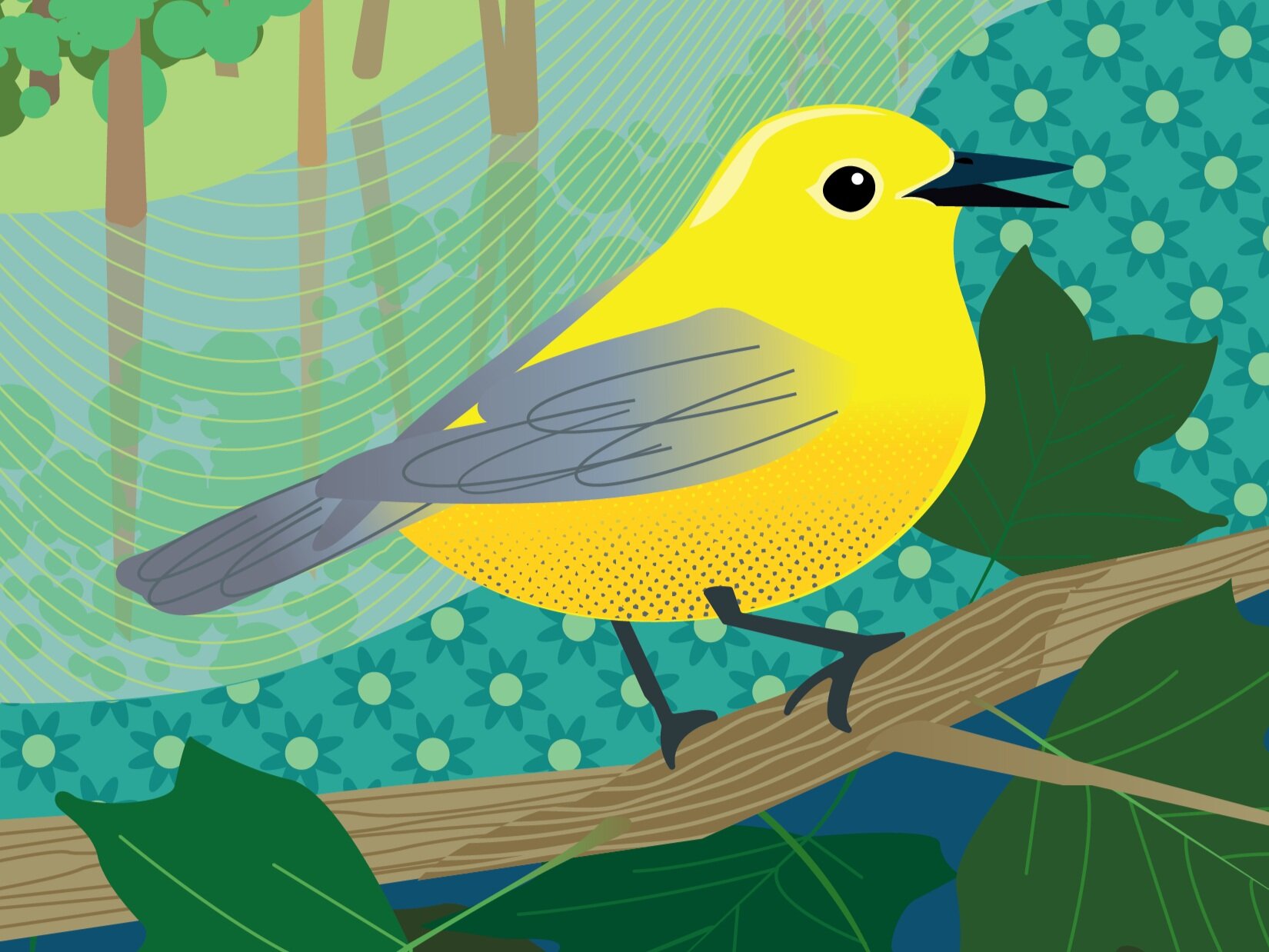The Golden Swamp Warbler
By Sharon Stiteler, Park Ranger, Mississippi National River and Recreation Area
One of the brightest birds found in the park’s corridor is the prothonotary warbler, which used to be known as the “golden swamp warbler”. For whatever reason, ornithologists preferred an obscure word for yellow robes worn by papal clerks, known as prothonotaries. The dandy yellow American goldfinch shows up at bird feeders, but to truly understand “gold” as a color is to see the prothonotary warbler as it flits through the understory of floodplain forest on sky blue wings.
The prothonotary breeds in the southern portion of the eastern United States, but there’s a population that follows the Mississippi River as far north as this park’s corridor. These insectivores seek out flooded bottomland forests and use the sorts of dead trees that any self-respecting chickadee would ignore for sturdier trunks. Prothonotaries are one of two warbler species in the United States that use nest cavities. Because their soft beaks are ill-suited for carving out a hole in wood, they rely on old, unused chickadee and woodpecker cavities. In some parts of their breeding range, they will even use nest boxes properly placed in a floodplain forest.
A male will arrive on territory and select several cavities, leaving a calling card of moss. If a female accepts his territory, she will select a mosslined cavity and continue to build the nest. Their bouncy, high-pitched, rapid “tweet, tweet, tweet, tweet” is most active in June and July at the Vermillion River Bottoms in Hastings. Some years the birds push further upriver, and nesting sites have been documented near Crosby Farm Regional Park and Minnesota Valley National Wildlife Refuge.
The park’s Vermillion River Bottoms paddles are a fantastic way to spot these golden gems in the floodplain forest. Check our event calendar for possible upcoming dates.


